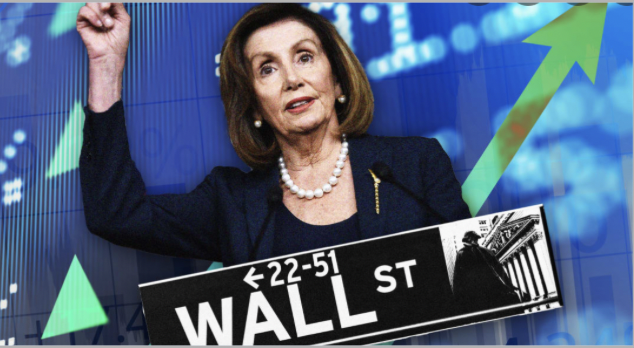Recently, milder-than-usual temperatures throughout the U.S. and Europe have contributed to a recent decline in the price of natural gas. Of course, we investors should lean towards being cautious and not base our decisions to put money into natural gas stocks solely on the price. The shift to renewable energy sources is a significant factor in the rising demand for natural gas. While the cost of installing new wind and solar facilities has dropped below that of natural gas plants in certain regions, it will take some time for these renewable resources to reach total capacity.
This leaves the potential for the natural gas market to prosper. Natural gas has gradually replaced coal in power plants in the United States and worldwide. Although it doesn’t quite match the cleanliness of renewable energy, it certainly lessens the environmental impact of producing electricity than coal would. Because of this, it is considered a transitional “bridge fuel” between coal and renewable energy for grid electricity. This and the commodity’s supply-and-demand dynamics can provide a more focused rationale for considering specific natural gas tickers as longer-term investments.
With that said, I’ve narrowed our natural gas options to three well-liked tickers that, as of late, seem to be positioned in the marketplace only to grow. The experts agree on their strengths; the quarterly dividends can’t hurt either. Join me while I break them down:
Chesapeake Energy Corp (CHK)
Chesapeake Energy Company (CHK) is an independent production business that purchases, explores, and develops assets to extract oil, gas, and natural gas liquids (NGLs) from underground resources. CHK has a wide range of unconventional natural gas and liquid assets on U.S. soil, including stakes in around 8,200 gross oil and gas wells. CHK’s natural gas resource plays include the liquids-rich Eagle Ford Shale in South Texas, the Marcellus Shale in the Northern Appalachian Basin of Pennsylvania, and the Haynesville/Bossier Shales in Northwest Louisiana. CHK’s marketing activities include gathering, processing, hauling, transportation services, and NGL (natural gas liquefication) marketing. CHK was founded by Aubrey McClendon and Tom L. Ward in 1989 and is headquartered in Oklahoma City, OK.
With a market cap of roughly $11 billion, CHK has a trailing twelve-month P/E (price-to-earnings) ratio of 2.59 and a forward P/E of 8.45. CHK has had a stellar earnings record in its past four fiscal quarters. CHK most recently beat EPS projections by 48.09% and revenue by 22.42%. CHK’s current quarter shows sales of $1.5 billion and an EPS of $2.35 per share. What also stands out to me are CHK’s year-over-year growth figures: Revenue +133.33%; EPS +274.36%; Net Income +355.94%; Profit Margin +209.69%. CHK impresses, too, with its whopping dividend yield of 11.12%, paying out $2.28 per share quarterly. Analysts that offer 12-month price forecasts have given CHK a median price target of $120, with a high of $155 and a low of $90. The median projection would entail a 46.5% gain from the stock’s latest pricing, and analysts have lined up across the board for CHK’s buy rating.
Cheniere Energy Inc (LNG)
Cheniere Energy Inc (LNG) is presently the top exporter (and producer) of liquefied natural gas in the U.S. based on volume. LNG offers cost-effective, dependable, and environmentally sound solutions to the rising natural gas demand. LNG offers liquefied natural gas as a full-service supplier, including procurement, transportation, liquefaction, vessel charting, and delivery. The Sabine Pass and Corpus Christi terminals are LNG‘s primary liquefaction and export facilities. The Sabine Pass terminal is in Cameron Parish, Louisiana, comprising six liquefaction units with a combined annual production capacity of around 30 million tons of natural gas. LNG’s Corpus Christi terminal is located in Texas, close to the city of the same name. The Corpus Christi facility is linked to other interstate and intrastate natural gas pipelines through the LNG-operated 21.5-mile natural gas supply pipeline. LNG was founded in 1996 by Charif Souki, and its headquarters are in Houston, TX.
LNG’s market cap is nearing $40 billion, and it trades more than 1.2 million shares daily, with a safe beta measure of 1.01. For the current quarter, LNG shows sales of $5.9 billion, with an EPS of $5.74 per share. LNG shows year-over-year revenue growth of 175.89%, and it has had no problem beating Wall Street’s expert revenue projections for each quarter of 2022; LNG reports again on May 3rd. LNG has a dividend yield of 1.00%, with a quarterly payout of 40 cents per share. The analysts who provide yearly price estimates have marked LNG with an average price target of $197.50, a high of $236, and a low of $168. The median target suggests a 24.5% jump from LNG’s latest price, with the high mark representing an increase of 48.8%. LNG has a solid buy rating that should hold our attention.
Devon Energy Corp (DVN)
Devon Energy Corporation (DVN), an independent energy corporation, explores, develops, and produces oil, gas, and natural gas liquids. DVN operates in five U.S. onshore basins: the Delaware Basin, Eagle Ford, Powder River Basin, Anadarko Basin, and Williston Basin. DVN utilizes the Delaware Basin to run eight rigs that explore and develop geologic resources such as the Wolfcamp, Bone Spring, Leonard, and Delaware formations. DeWitt County, Texas, hosts DVN’s Eagle Ford operations. DVN’s Powder River Basin asset targets Turner, Parkman, Teapot, and Niobrara oil deposits. Oklahoma’s Canadian, Kingfisher, and Blaine counties are home to DVN’s Anadarko Basin operations. DVN was founded in 1971 by J. Larry Nichols in Oklahoma City, OK, where its headquarters are located.
DVN shows $3.6 billion in sales for the current quarter, with an EPS of $1.67 per share. DVN reports earnings again on May 2nd; it barely missed analysts’ projections for Q42022 but flew past expectations in the prior three fiscal quarters of the year, easily beating both revenue and EPS. DVN shows impressive year-over-year numbers: Revenue +29.76%; Net Income +125.89%; Profit Margin +74.08%; and EPS +132.26%. DVN has a market cap of nearly $36 billion, with a trailing twelve-month P/E ratio of 5.97 and a forward P/E of 7.68. DVN boasts a noteworthy dividend yield of 8.02%, with a quarterly payout of $1.17 per share. The analysts who offer annual pricing projections give DVN a median price target of $70.50, with a high of $89 and a low of $59. The median estimate implies a nearly 30% increase from DVN’s current pricing, with the high target making for a 63.2% jump. With growth in plain sight, analysts concede with DVN’s buy rating, which we should keep at the forefront of our portfolio considerations.
Read next – Secret NASA project will destroy Elon Musk
Between 1956 and 1958, NASA and the United States Air Force conducted a series of covert tests in an isolated compound in rural Virginia.
Access to this special program was classified higher than “Top Secret”…
And only 25 people knew of the project’s existence.
Its codename was Project Suntan.
Its mission?
To develop an entirely new type of fuel that would allow the U.S. to achieve total energy dominance over the Soviet Union.
The elite team of physicists and engineers were given a blank check by the government and told to do “whatever it takes.”
After two years and $2 billion…
The members of Project Suntan stumbled on a MASSIVE discovery.
A way to convert one of the Earth’s most abundant resources into cheap, powerful, virtually endless energy.
Following their discovery, the team was quietly disbanded.
And this new fuel was kept secret by the highest levels of U.S. intelligence.
But all that is changing as we speak.
Finally, after more than 60 years in secrecy, this fuel is slowly being rolled out to the public.
And one tiny company has obtained the patents on this world-changing “Future Fuel.”
Forget Tesla, or any of the other “alternative energy” companies out there.
Once this “Future Fuel” hits mainstream, it will make electric power obsolete.
It will make wind and solar obsolete.
It will even make oil obsolete.
And it will hand investors a once-in-a-lifetime chance to get rich.
Imagine if you had been able to invest in the birth of the oil economy.
You would have had more wealth than you could ever imagine.
Well, you have a rare second chance.
Because as “Future Fuel” replaces oil, wind, solar, and electric…
Investors could turn every $500 into $234,000 or more.
The future is here.





